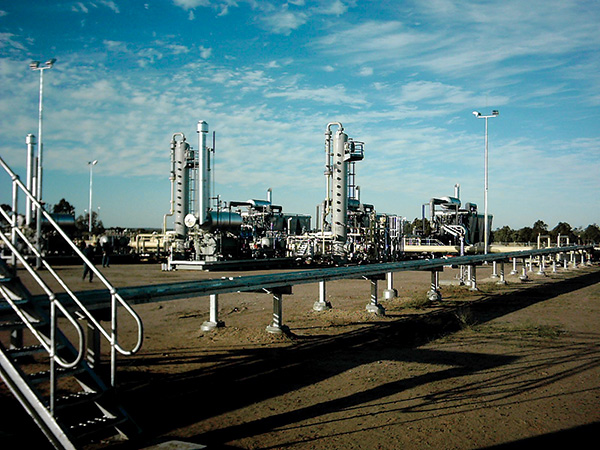Perspective: Why US Natural Gas Output Keeps Rising as Prices Sink
(Reuters) — U.S. natural gas prices last week plunged to a 30-month low, crossing below $2 per million British thermal units (MMBtu) for the second time this year, even as some producers have cut drilling to stave off further convulsions.
Since the start of the year, U.S. gas futures NGc1 have collapsed by about 50%, a record drop for a quarter, on rising output and mostly mild weather so far this winter that kept heating demand low and allowed utilities to leave more gas in storage than usual.
But there is little chance of stopping output from continuing to grow. The amount of gas in U.S. storage, meanwhile, sits about 21% higher than is normal for this time of year, and that surplus will set up U.S. inventories to reach record highs before next winter's heating season.
Big gas producers including Chesapeake Energy Corp. and Comstock Resources Inc. are reducing their drilling. But gas that comes up with oil will continue to rise in the biggest shale fields. And oil producers are not cutting back.
"About a third of U.S. gas production is associated gas - produced from oil wells," said Jacques Rousseau, a managing director at research firm ClearView Energy Partners LLC. "This production is unlikely to decline given current oil prices."
The Permian basin of Texas and New Mexico, the nation's biggest shale field, is hitting record monthly highs in oil output this year, according to U.S. Energy Information Administration (EIA) data. Gas from the Permian also has climbed to record highs every month this year.
So, while U.S. gas futures NGc1 were down by 50% in the first quarter of 2023, at $2.22 per MMBtu, they are not low enough to forestall output gains, say analysts.
"Gas prices are begging the market to cut back on supply, amid falling U.S. consumption and constrained LNG export options," said Stephen Ellis, an energy strategist at Morningstar Research Services LLC.
Production Remains Sticky
U.S. gas production remains on track to hit 100.67 billion cubic feet per day (Bcf/d) this year, up from last year's record 98.09 Bcf/d, according to the U.S. government.
Projected U.S. gas usage, including exports, will ease to 107.3 Bcf/d this year from a record 107.4 Bcf/d last year due to expected declines in domestic consumption from residential, commercial, industrial and power generation customers.
That usage drop comes despite an expected 14% increase in U.S. LNG exports now that Freeport LNG's export plant in Texas has returned to production after an eight-month outage.
When operating at full power, Freeport LNG, which shut after a fire in June 2022, consumes about 2% of total U.S. gas supply.
Despite low gas prices, U.S. drillers have 160 rigs seeking gas RIG-GS-USA-BHI up 16% from a year ago, according to data from Baker Hughes Co.
Gas output in the Haynesville shale field in Arkansas, Louisiana and Texas where Chesapeake and Comstock are dropping rigs, also is on track to reach fresh highs in March and April, according to the EIA.
Related News
Related News

- Keystone Oil Pipeline Resumes Operations After Temporary Shutdown
- Freeport LNG Plant Runs Near Zero Consumption for Fifth Day
- Biden Administration Buys Oil for Emergency Reserve Above Target Price
- Mexico Seizes Air Liquide's Hydrogen Plant at Pemex Refinery
- Enbridge to Invest $500 Million in Pipeline Assets, Including Expansion of 850-Mile Gray Oak Pipeline
- Evacuation Technologies to Reduce Methane Releases During Pigging
- Editor’s Notebook: Nord Stream’s $20 Billion Question
- Enbridge Receives Approval to Begin Service on Louisiana Venice Gas Pipeline Project
- Mexico Seizes Air Liquide's Hydrogen Plant at Pemex Refinery
- Russian LNG Unfazed By U.S. Sanctions





Comments